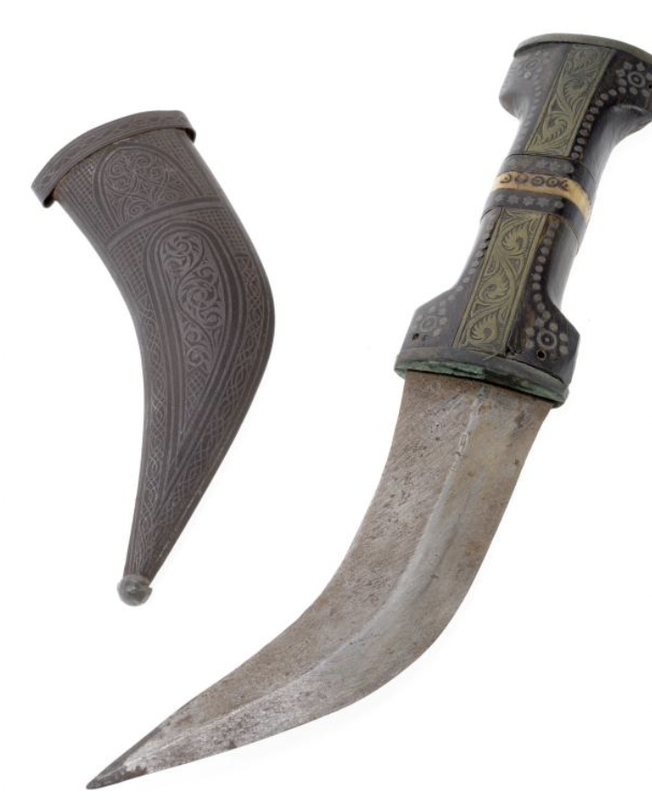This knife has been in the family for three generations now. It was a gift to my grand father for helping someone/ family with a great task. I have no idea of it's country/culture/date of origin. Only scripture is on the base of the blade on both sides, of which the language is unknown to me.
Greatly appreciated!
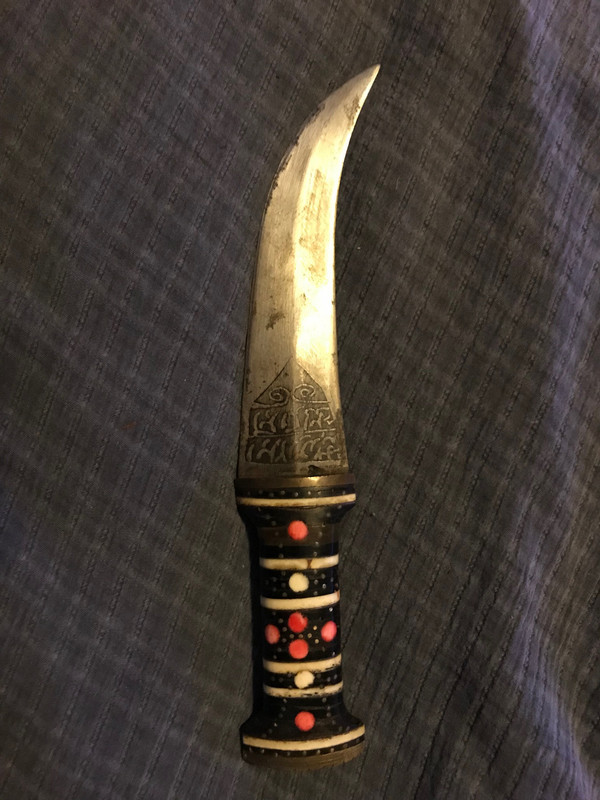
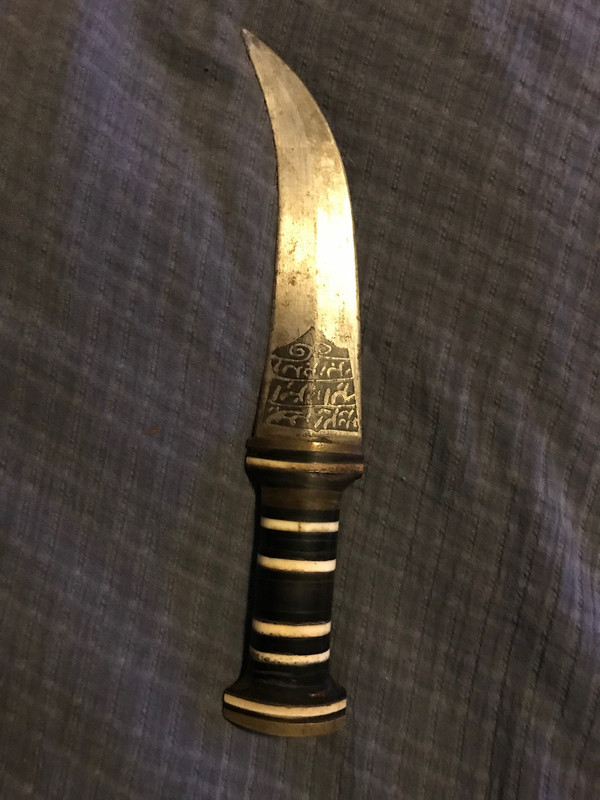
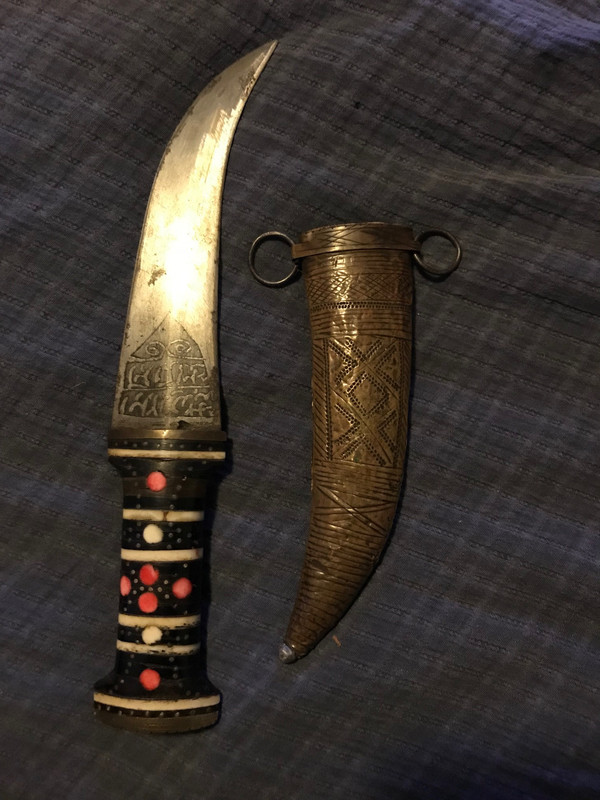
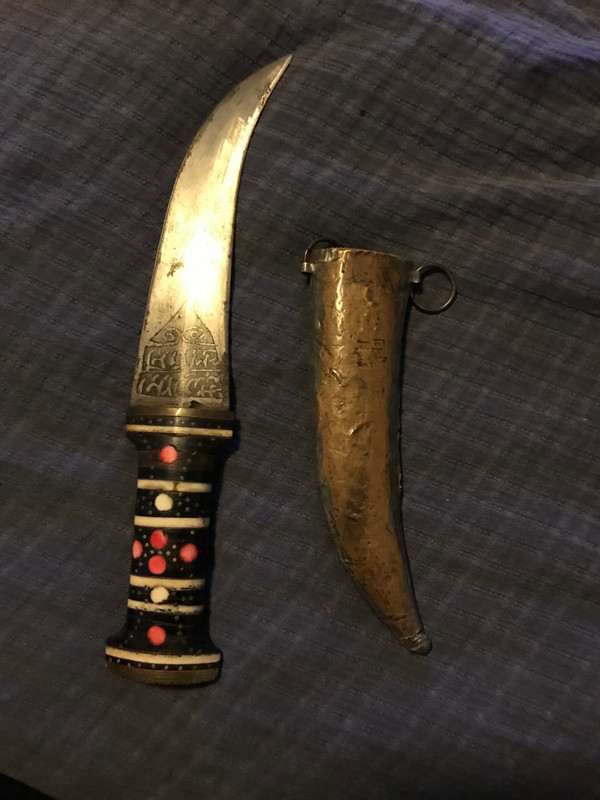
Greatly appreciated!





